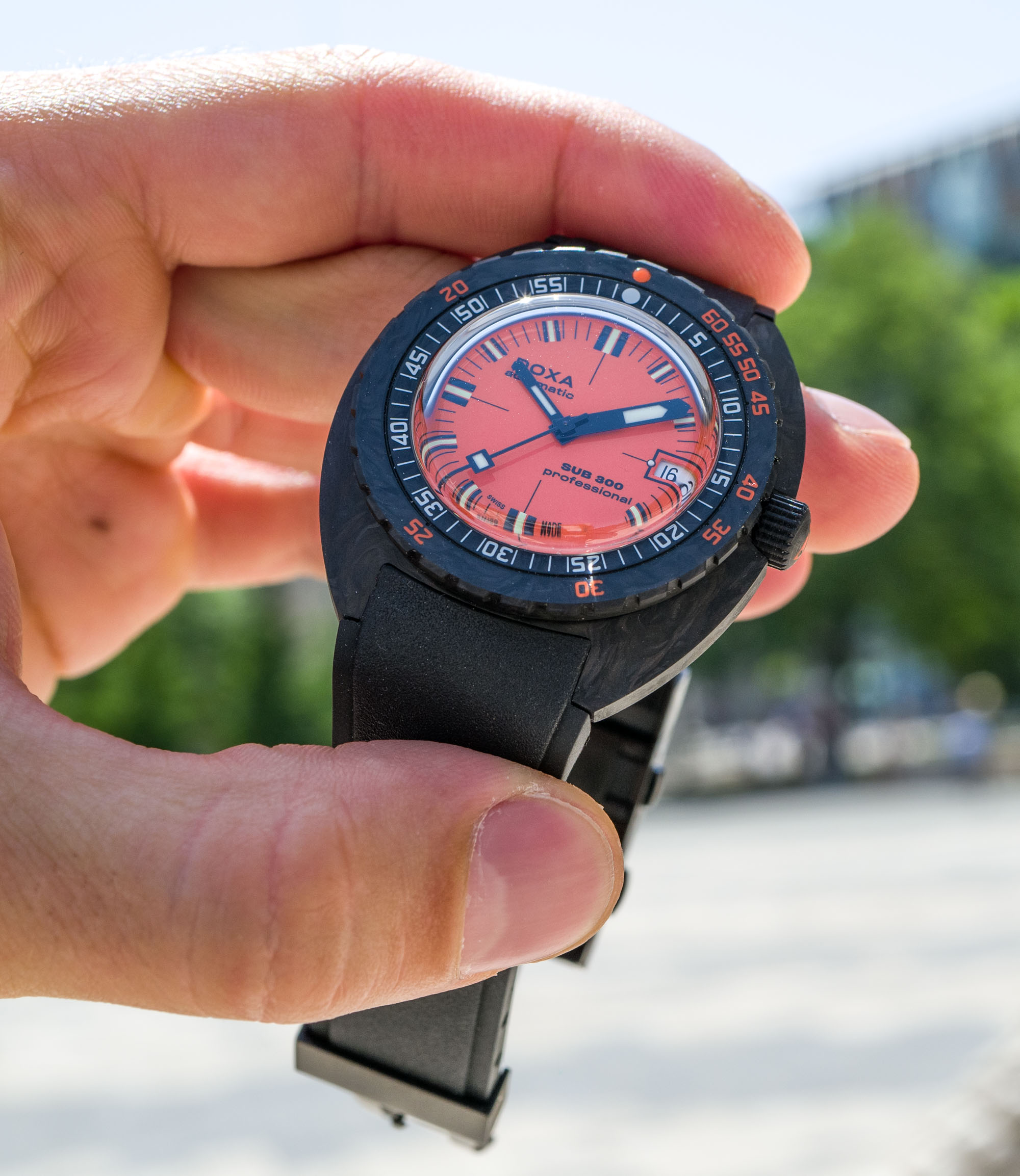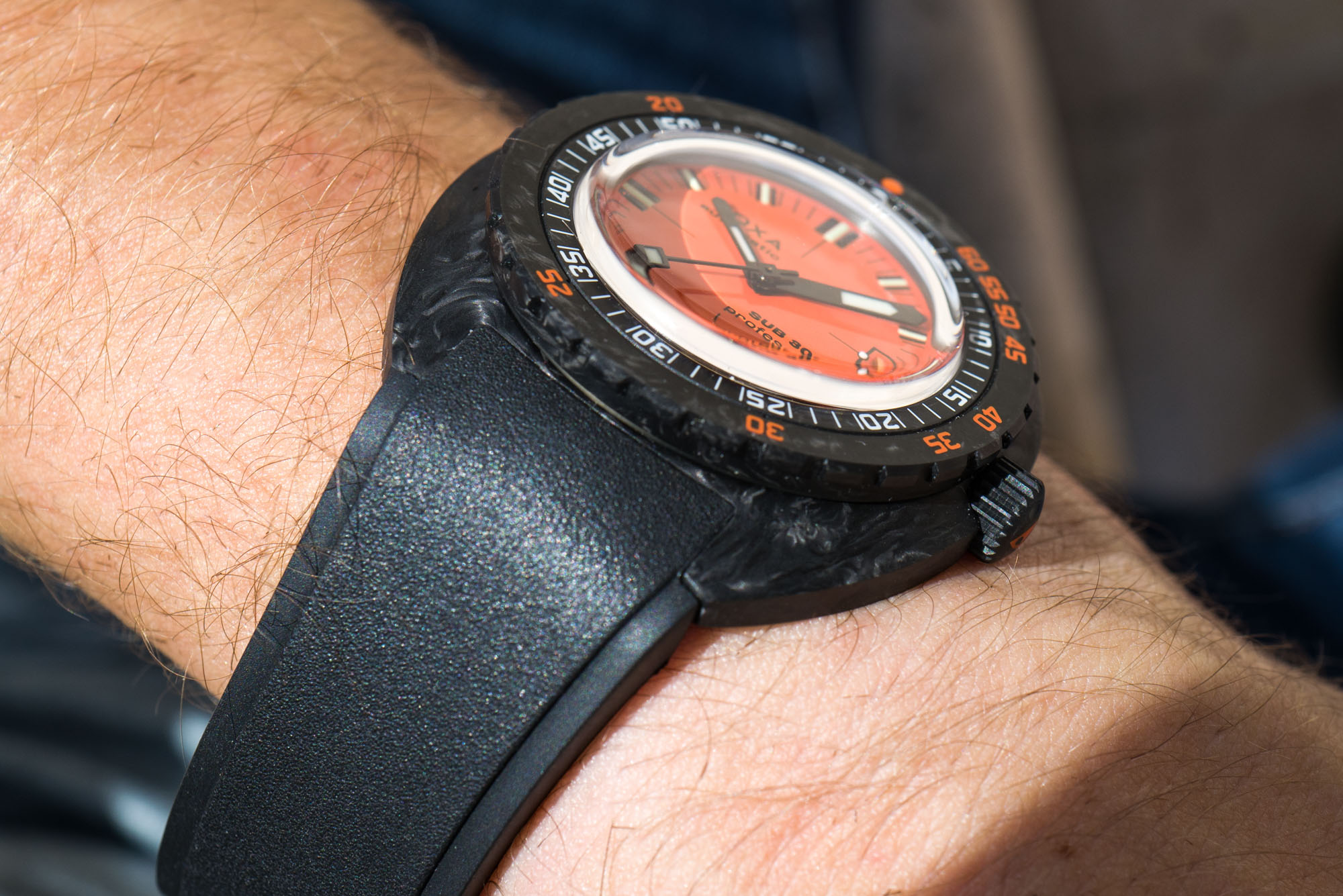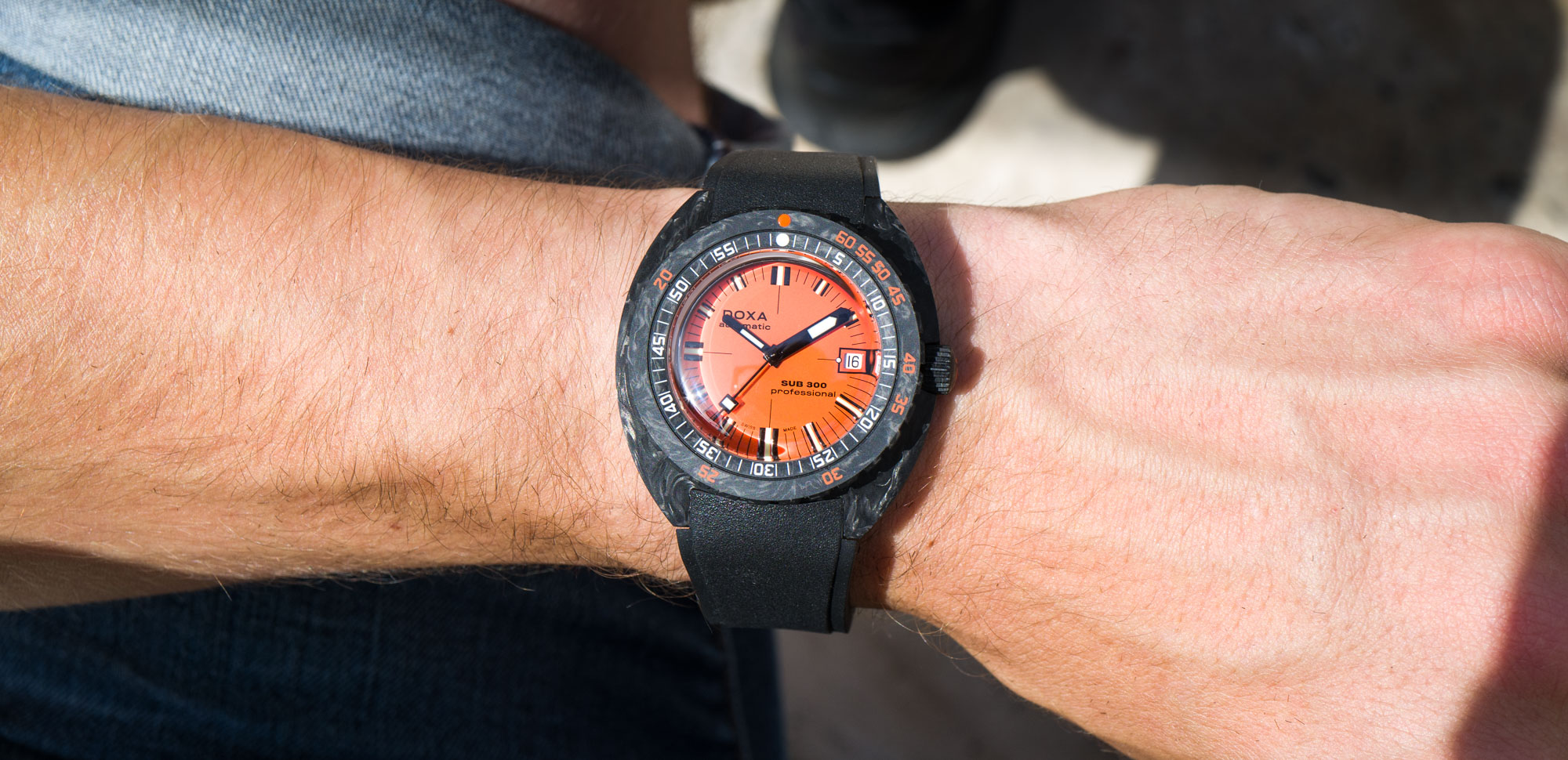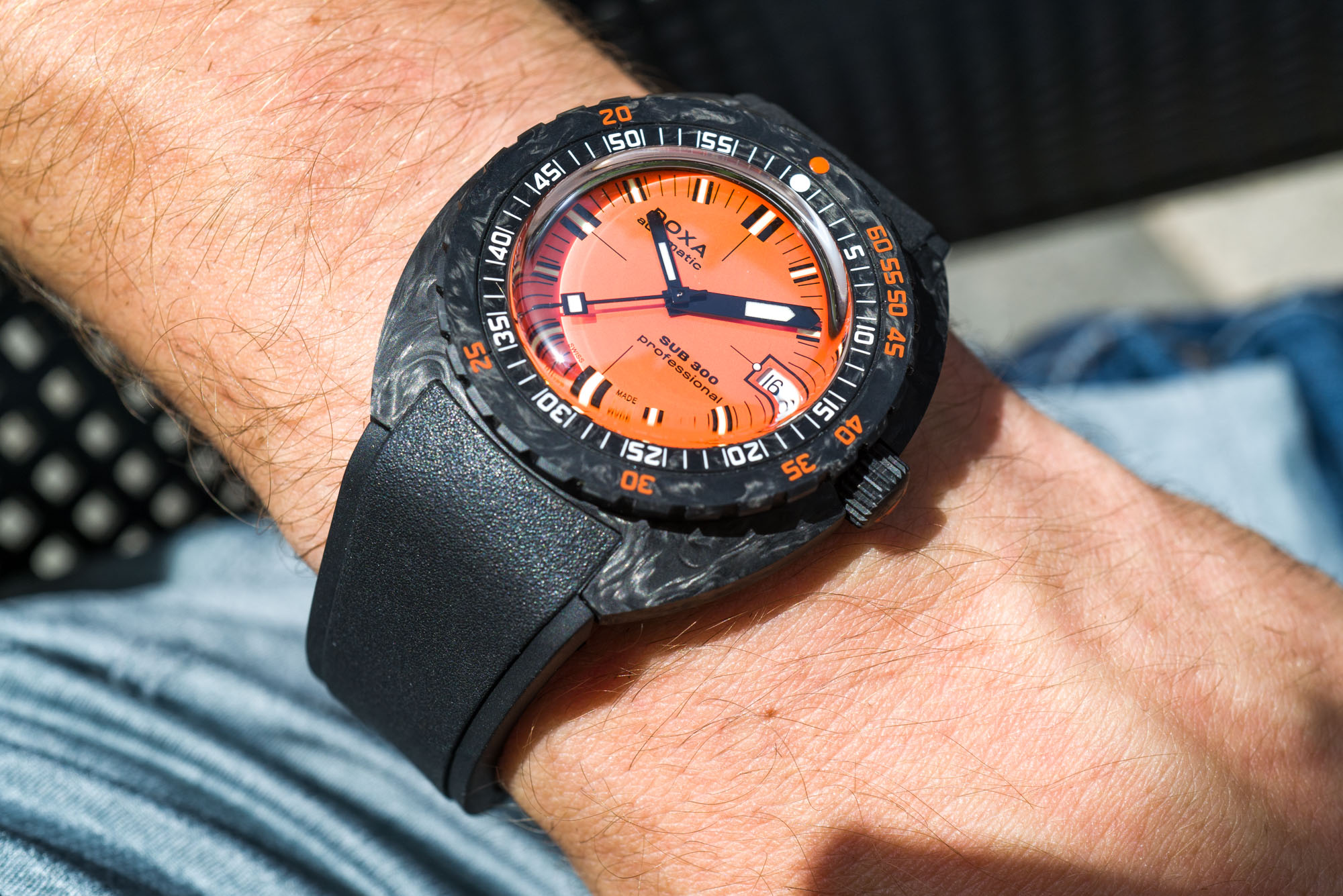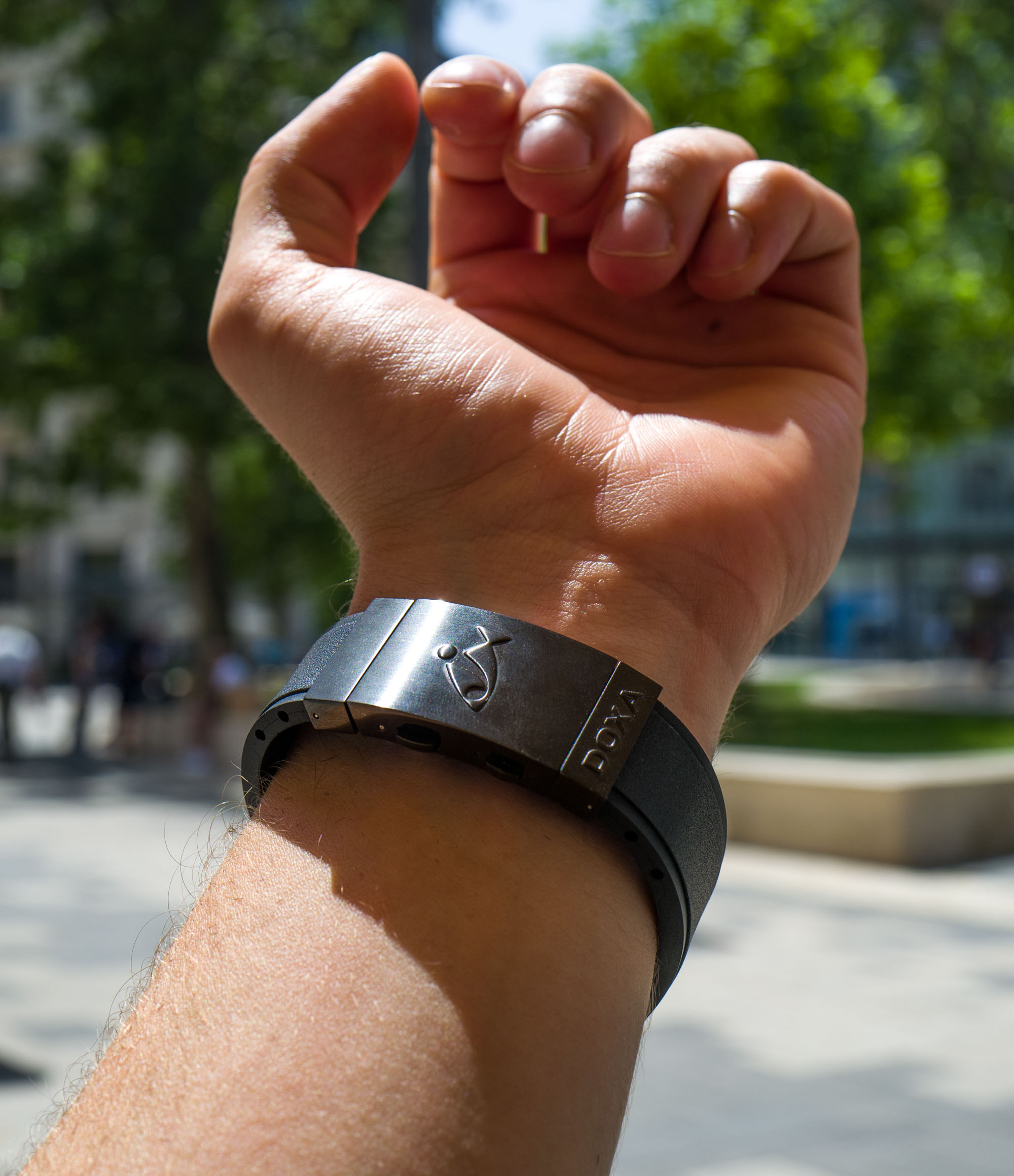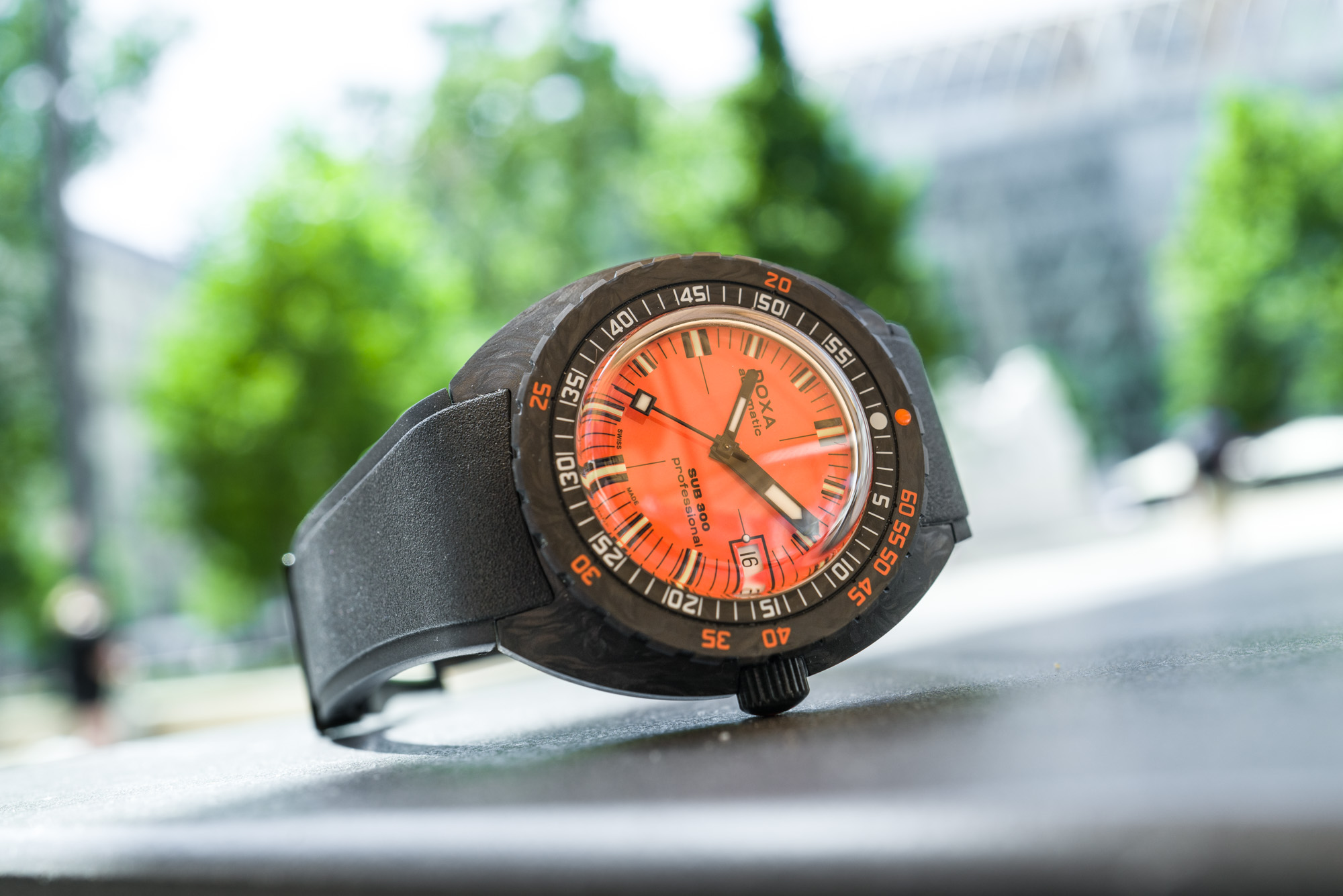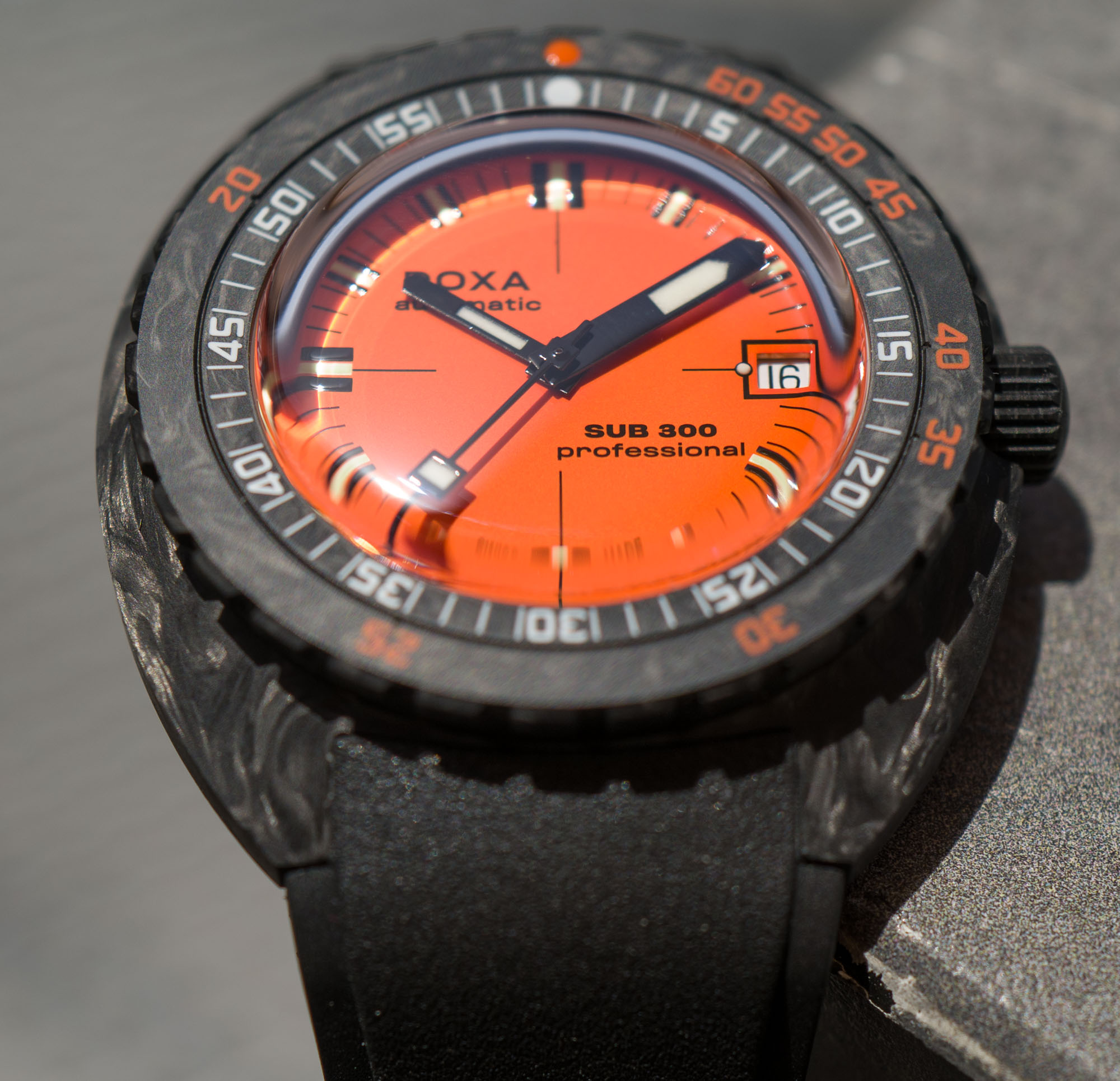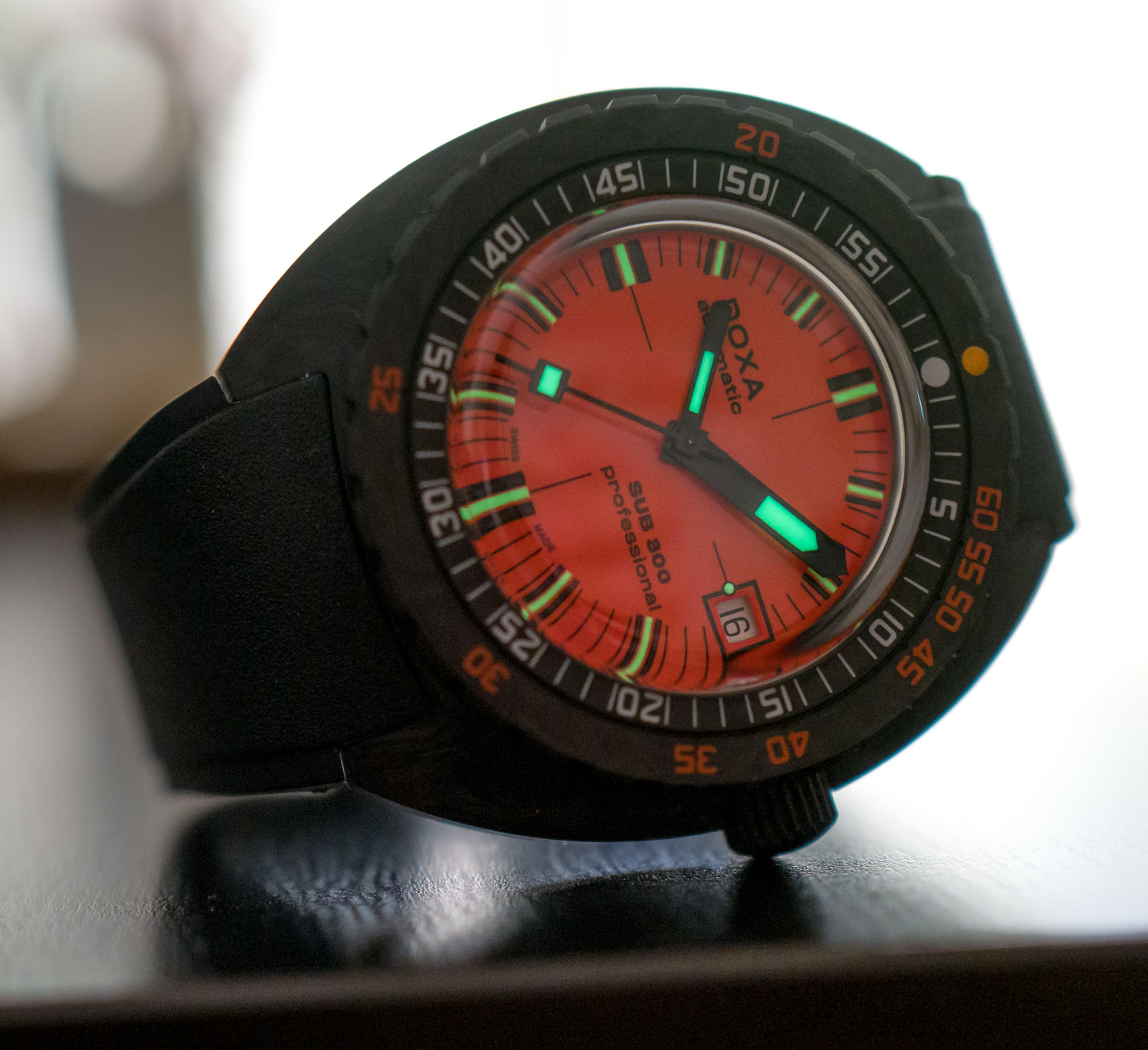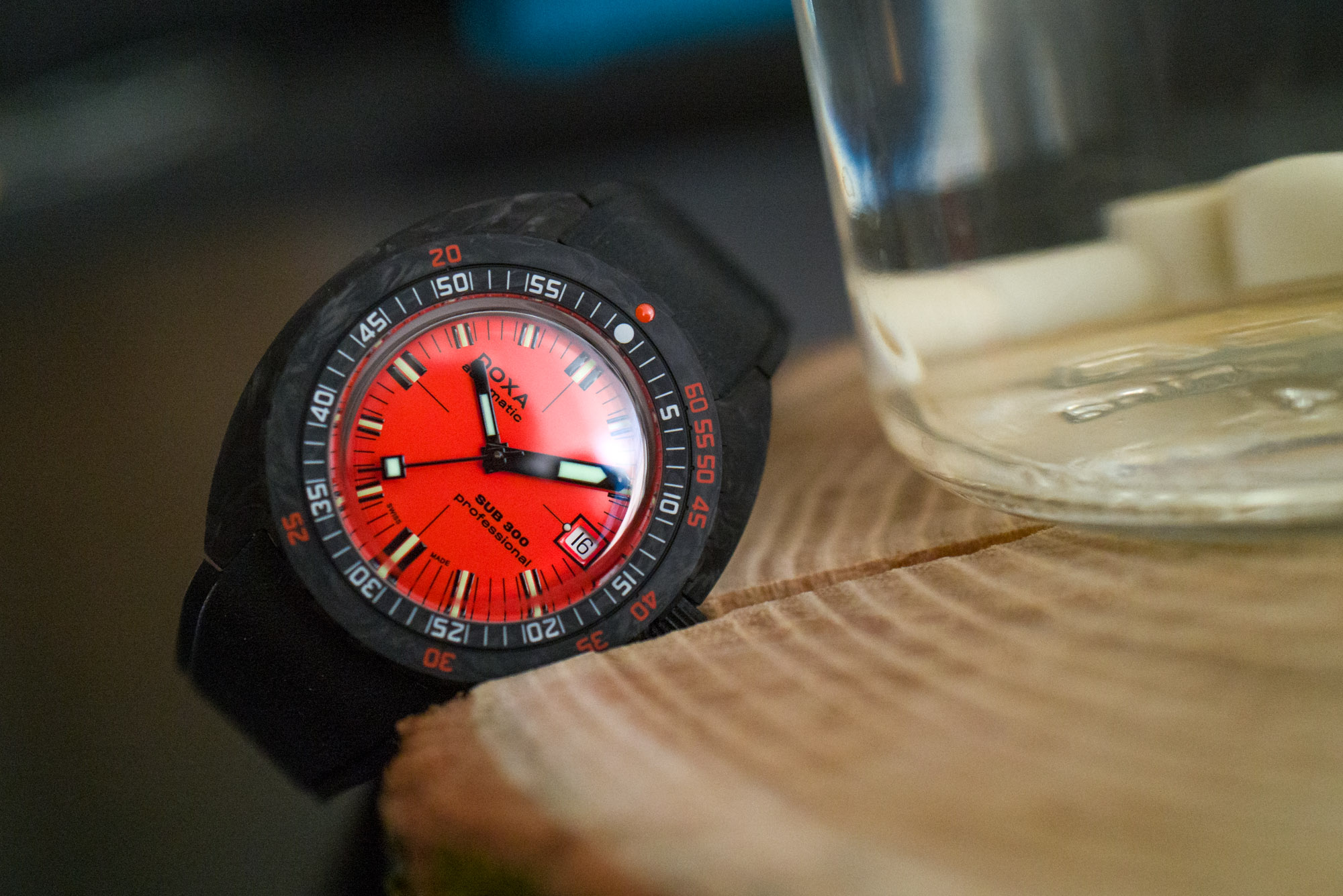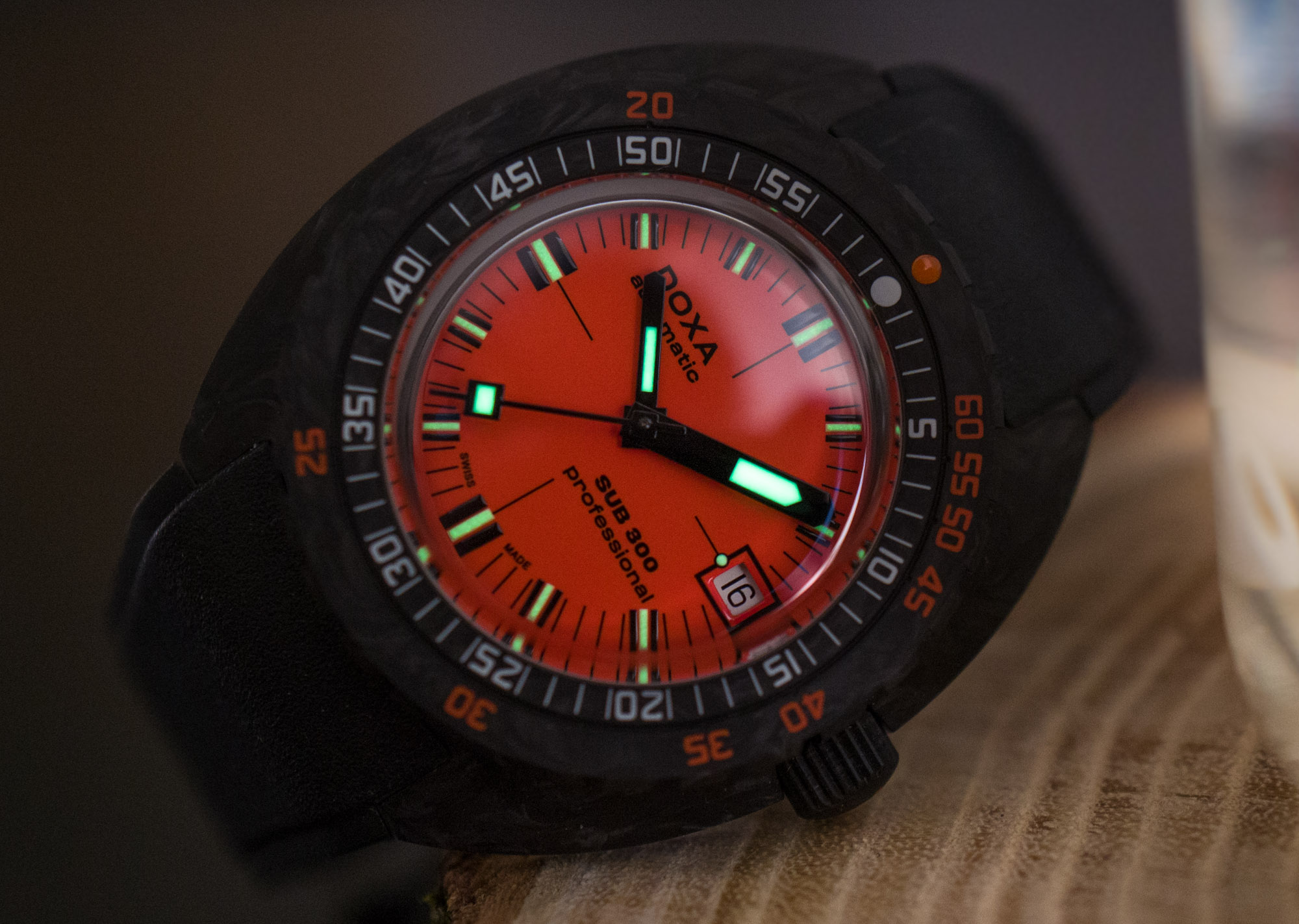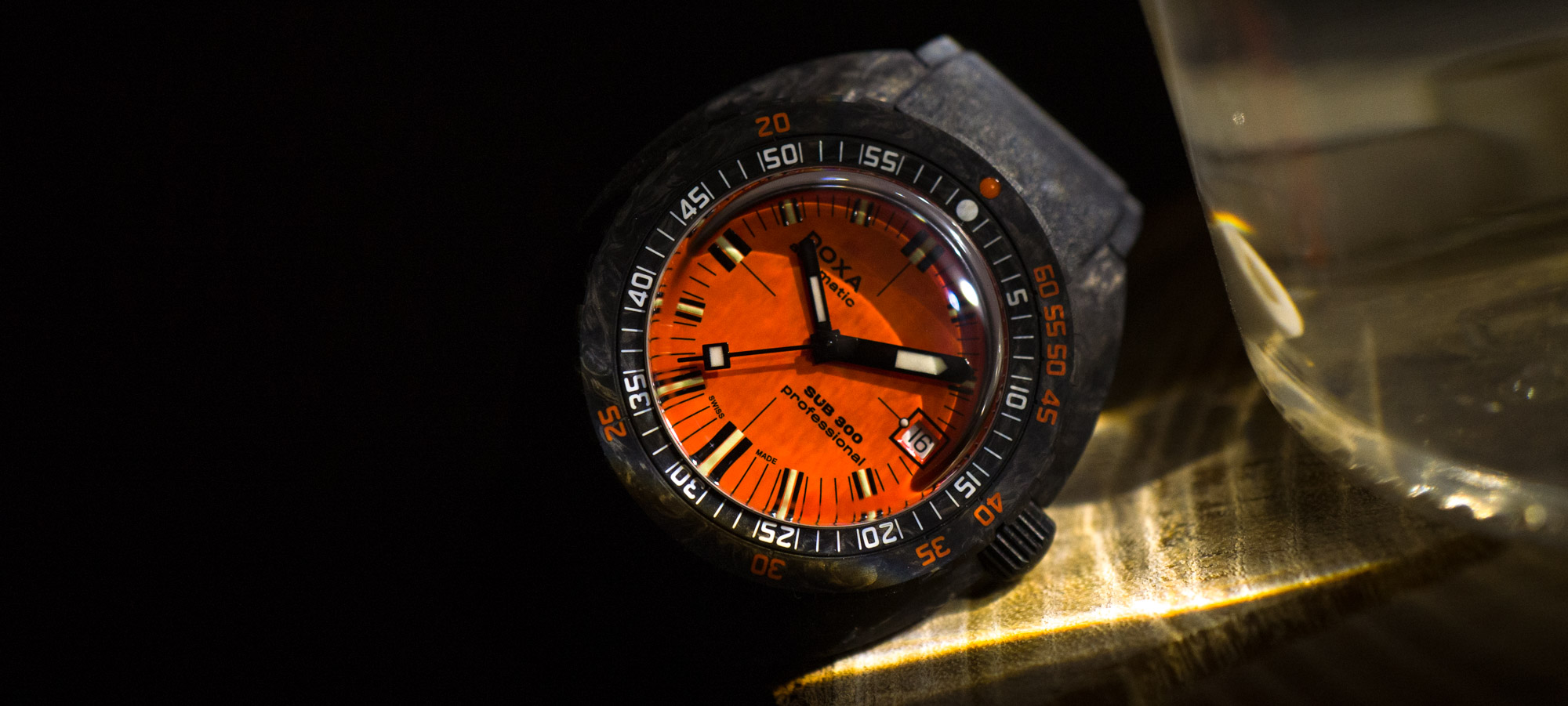
Presented in a blue sports material box of distinctly un-Swiss sportiness, the Doxa Sub 300 Carbon has made a splash by being the first carbon cased Sub 300 that isn’t a limited edition. Despite that, the collection continues to offer a wide range of funky colors that have long rendered the Sub 300 collection that much more special. It isn’t all perfect, but it’s more than worth a closer look.
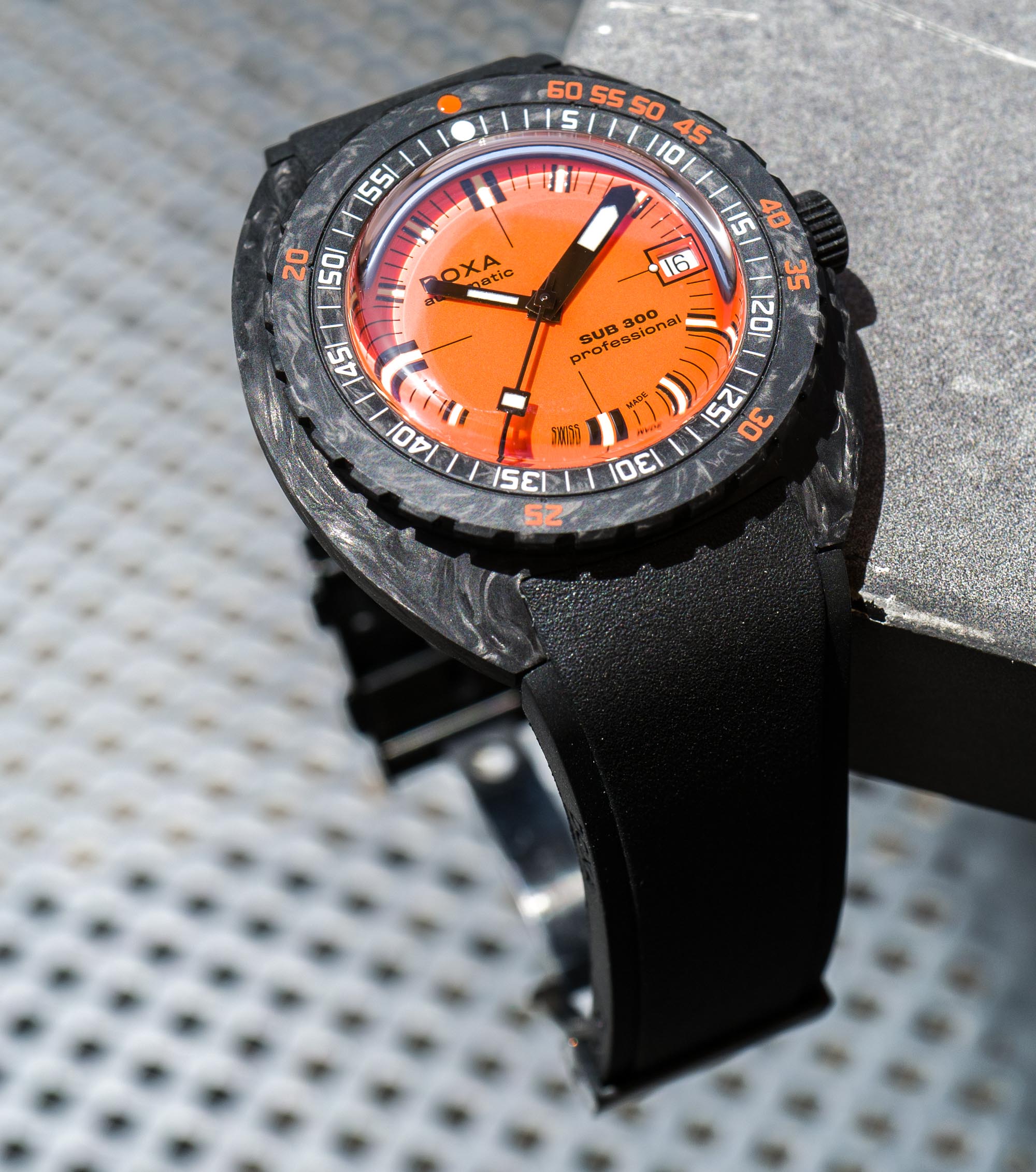
A saturated orange bezel with distinctive black and off-white markers looks you straight in the face when you unzip the packaging. I can’t quite put my finger on where this vibe is radiating from within the Sub 300’s 50-year history, but it does actually look like a watch that could take a shark attack head-on. I couldn’t, and the Doxa Sub 300 Carbon doesn’t for a second make me feel like I could. But this watch looks almost angry for having spent so long in a box – and so little somewhere in the open seas.
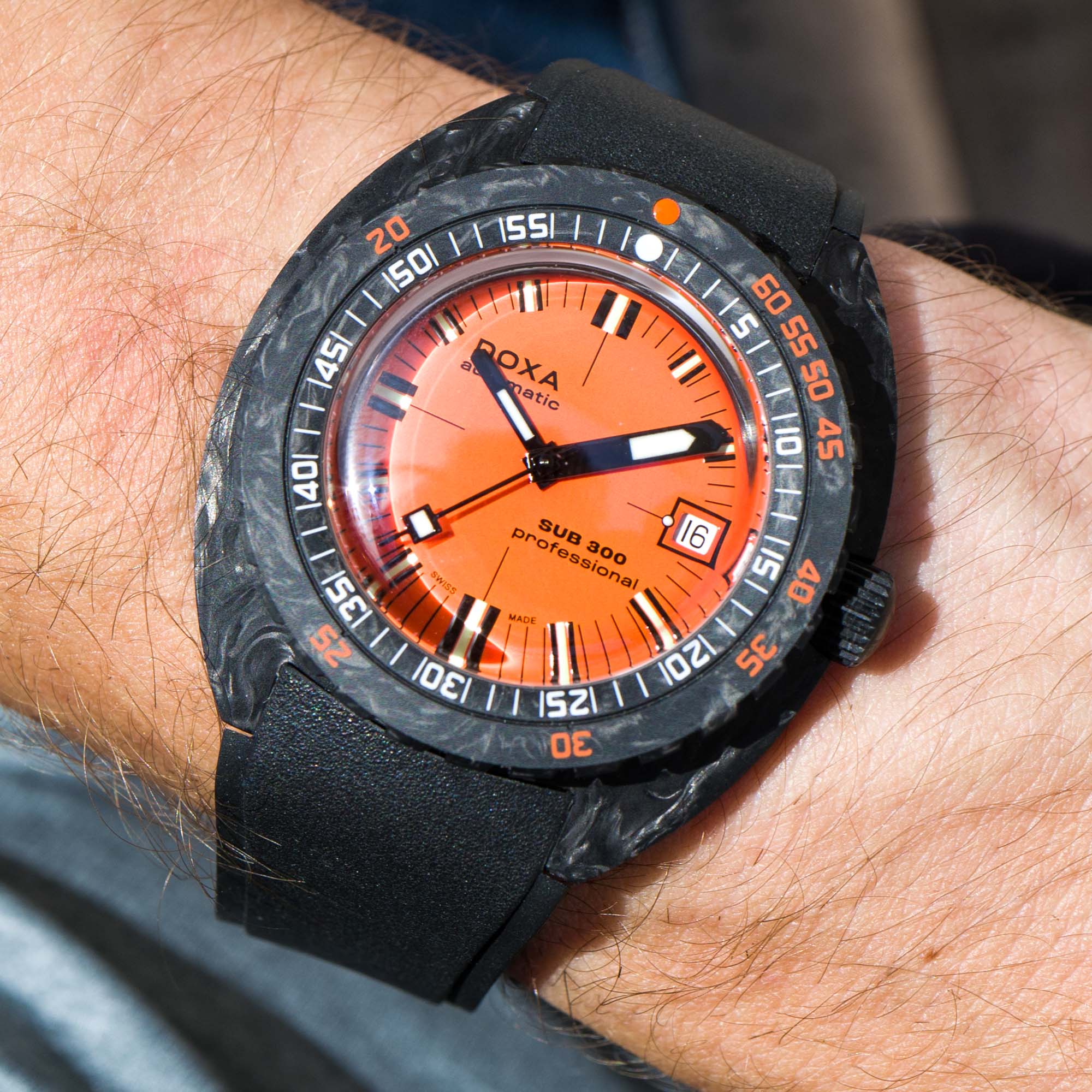
Rated water-resistant to – and I’ll let you have an educated guess… yep, 300 meters, but the Sub 300 is nevertheless impressively thin. In fact, it has one of the most badass case profiles (if there ever was one) of all dive watches. The middle case or “case band” looks like someone’s grandparent flattened it with a rolling pin, as the lugs extend in an almost unending fashion laterally while also tapering off at the same time. I found myself just holding watch by these thin and wide lugs — it’s that entertainingly eery a case execution.
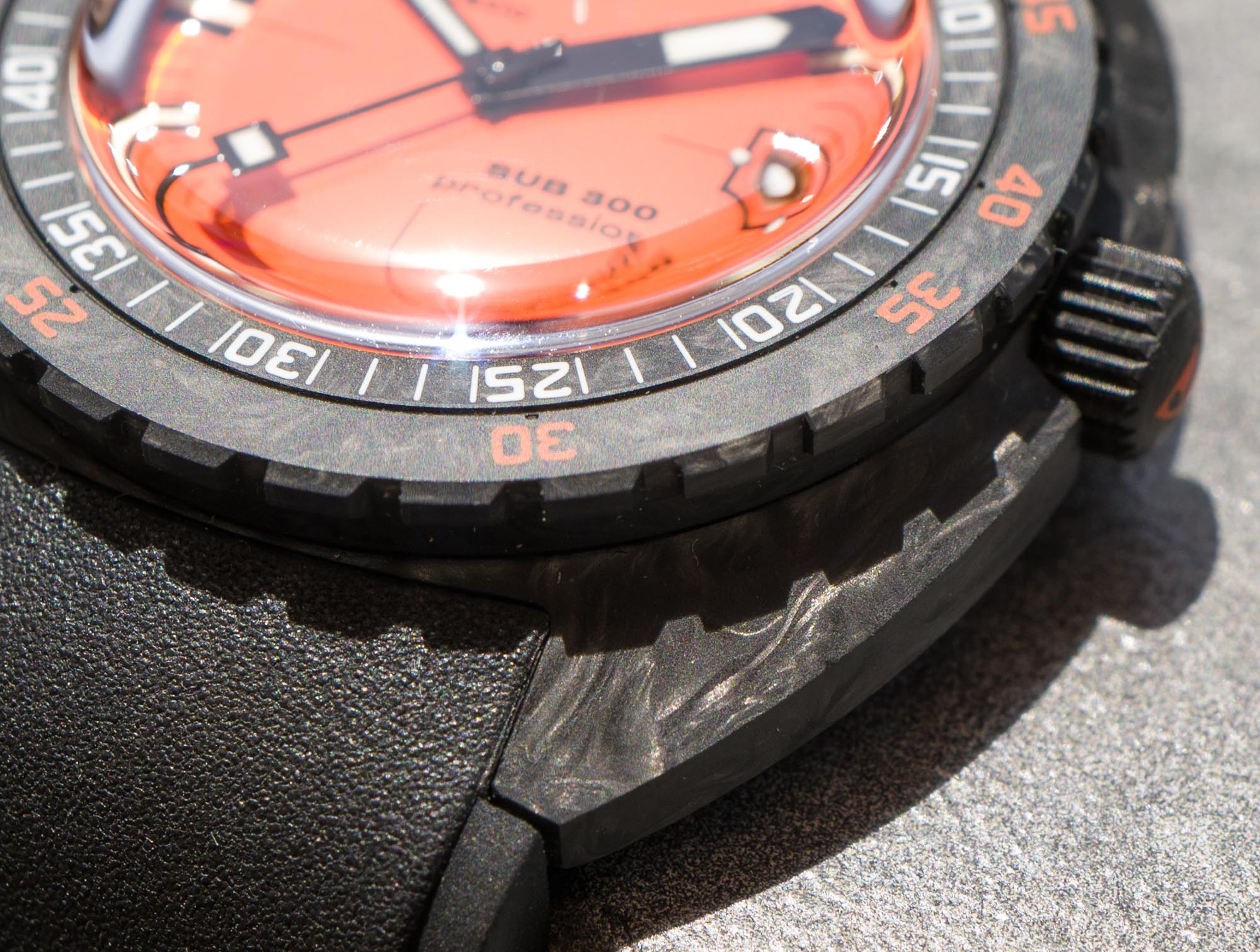
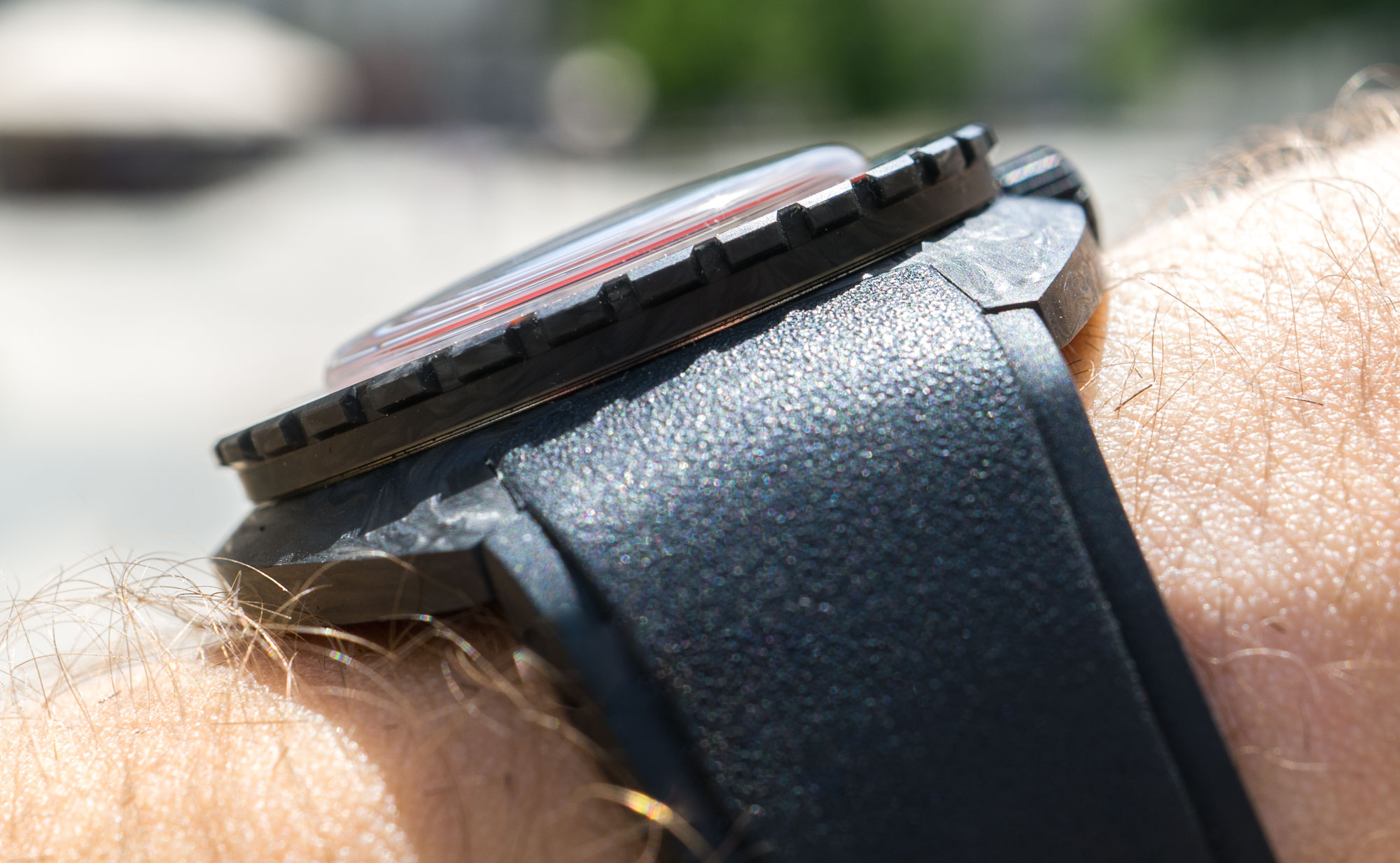
The bezel looks like it came off the helmet of an old ADS (atmospheric diving suit). Also reminiscent of a bastion with its chunky extending bits, it is wide enough to accommodate the regular timing scale, as well as the US Navy’s no-decompression limit table, a reference for diver safety. The SUB 300 Carbon’s patented bezel uses these two separate scales to reliably calculate and monitor dive times: orange for the outer “depth” ring, and white for the inner “minute” ring. The action is super-clicky, quite accurate, and, indeed, weapons-grade loud.
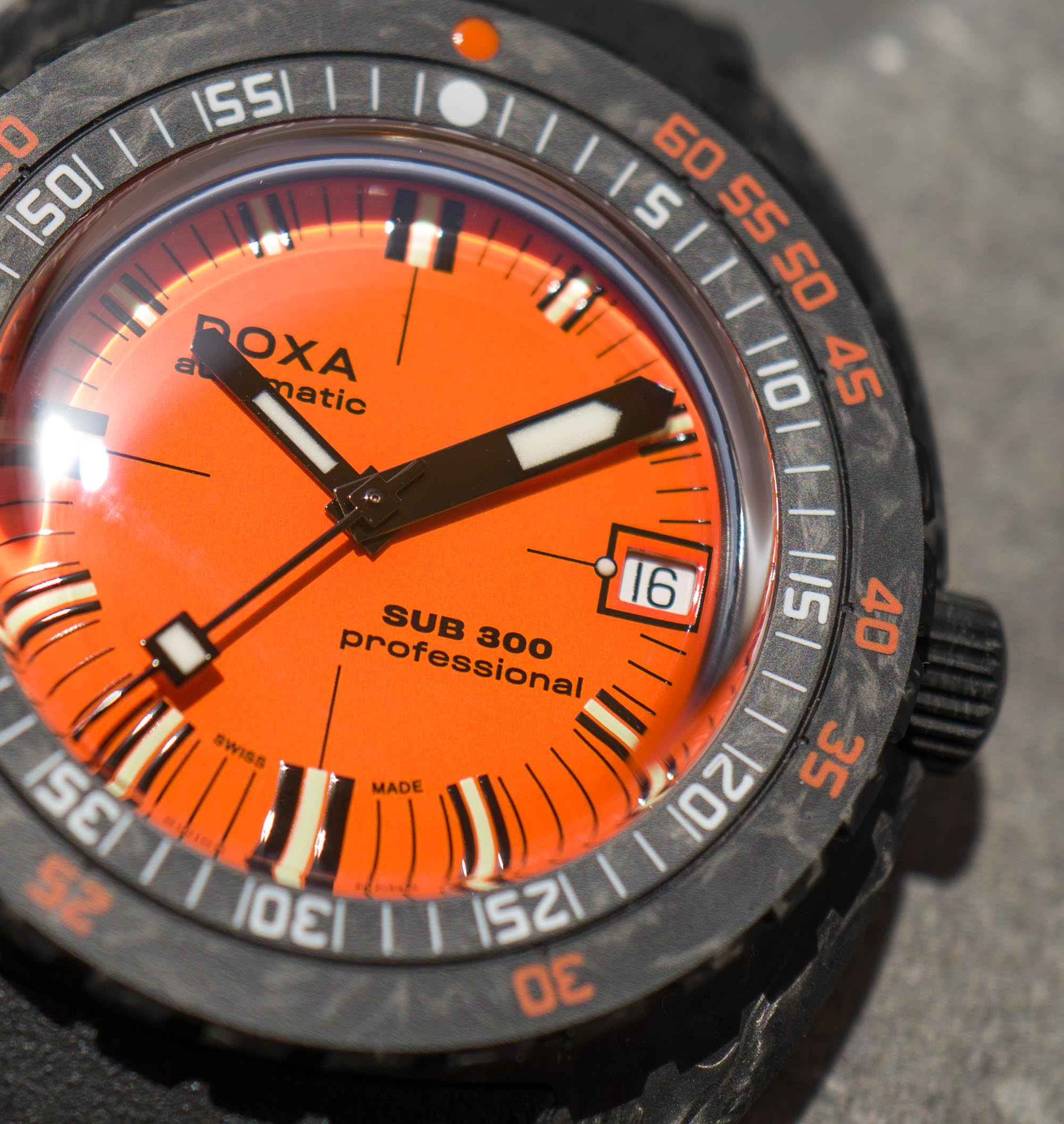
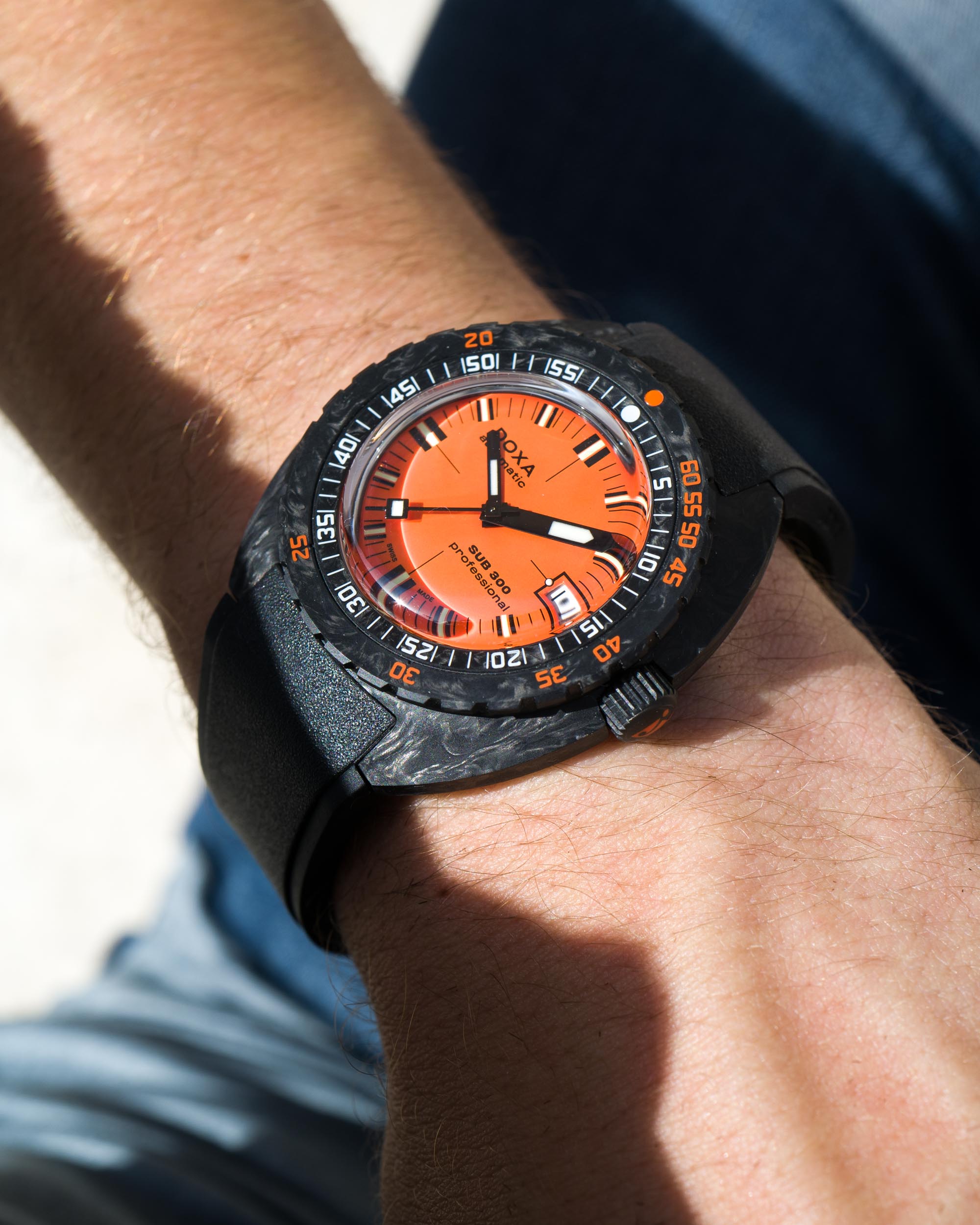
The aforementioned dial looks ace in just about every color. The hour hand tends to get lost and does so not by mistake but by design: it renders the already massive minute hand that much easier to distinguish at a quick glance. The proportions somehow still work between the various hand and index sizes and I do respect that. Less thrilling is the light show the luminous hands and especially the markers put on and that is due to the off-white (bordering on yellow) paint that was used for the markers. When viewed in normal conditions (i.e. not in the dark) their yellowish color perfectly complements the orange base – it is just that this color of luminous paint has never been and will never be as bright as the standard white/neon green luminous paint. On most other dial colors for the Doxa Sub 300 Carbon, specifically the navy blue, yellow, turquoise, and black, the markers appear white and so they promise a more impressive light show. As much as I like this orange base, I am not sure I could live without the most powerful glow on my expensive dive watch.

The 42.50mm x 45.00mm x 13.40mm case is so light that the massive clasp with its integrated micro-adjust actually tips the watch over. In other words, the clasp appears to be heavier than the entire watch head with 300 meters of water resistance, a movement, case, dial, and domed crystal. That’s pretty amazing. Lug width is 20mm, and that is combined with an integrated rubber strap design — no bracelet option on the carbon case, of course (though a carbon bracelet would be something else on these)! The strap is well-made with a cool wave pattern on the inside and Doxa branding in its side profile, marking it a proper OEM strap.
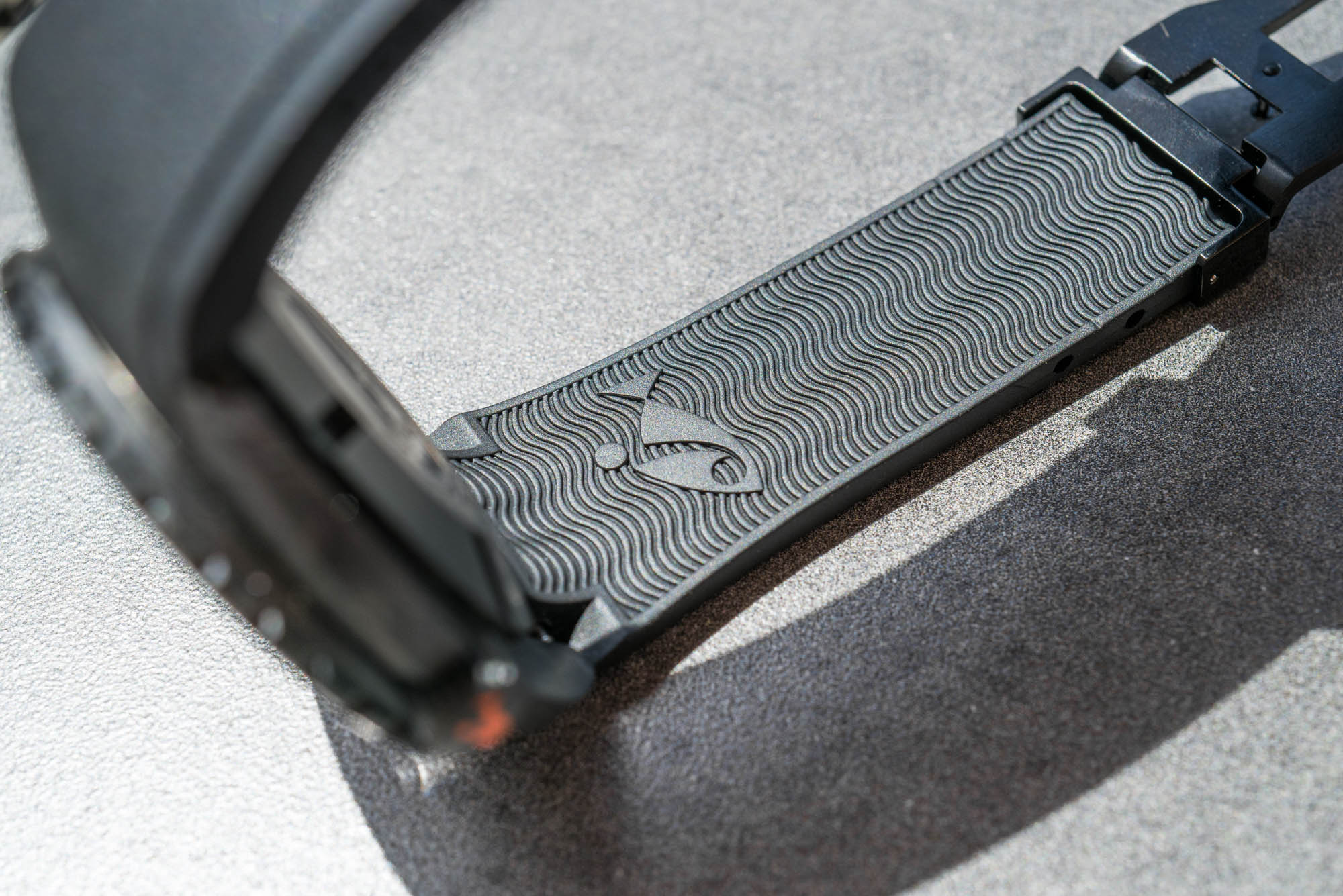

Well made it may be, the overall aesthetic it creates with the watch head is a developed taste. It is also a cut-off affair, meaning that you have to cut both straps to size, which is always a terrifying experience, but maybe that’s just me. The integrated micro-adjust is cool, as it allows rather small increments of adjustment. What is less cool is that it isn’t fully integrated into the clasp: opening it creates some sharp edges and spaces dirt can get through. It is clear that Doxa has put a lot of effort into the strap and the clasp, but I’d probably put this valuable strap and clasp aside and not cut them to size, just get something else that looks and feels good with the thin lugs.

The engraved solid caseback looks and feels great: It’s a proper piece of metal neatly engraved and labeled with white text – including “Certified Chronometer.” Both the case back and the inner cage that lives under the carbon shroud are crafted from titanium, a very costly choice that is nevertheless appreciated for a host of reasons. First, thanks to its heat transmission properties, titanium feels very different against the skin than stainless steel — it is less cold and picks body heat up better. Second, it is much, much lighter than steel and, to be frank, there really isn’t much of a point to wrapping heavy steel in a thin veneer of carbon for the sake of “lightness.” A small, borderline-invisible detail that you can nevertheless feel every time the Doxa Sub 300 Carbon is on your wrist.
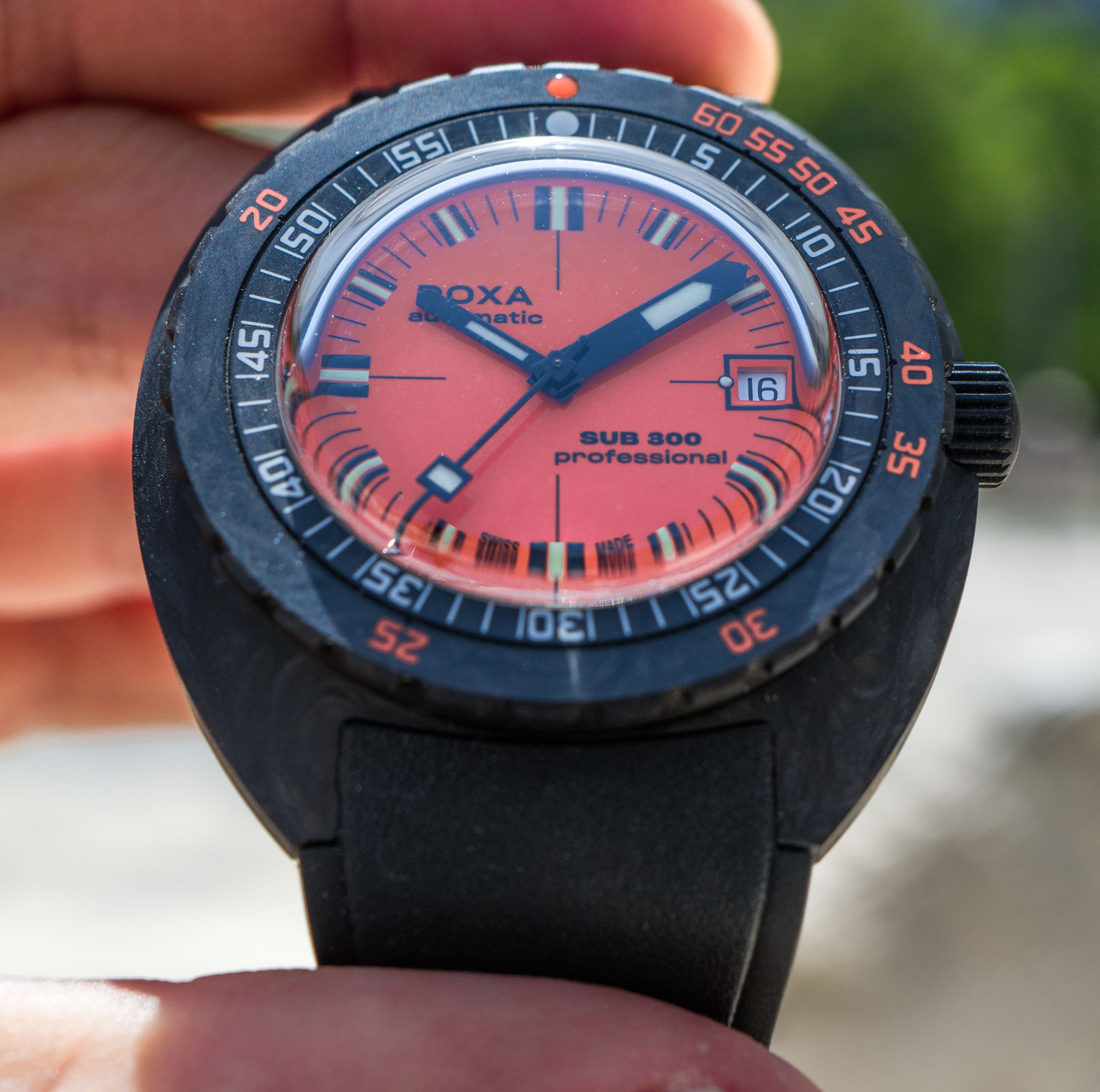
Under the titanium caseback lives a COSC-certified version of the workhorse ETA 2824-2 movement. It runs at 4 Hertz, is virtually indestructible (it’s been in production since the last ice age so by now it really should be reliable), and it’s thin. Its only major downside is its measly 38-hour power reserve — numerous luxury brands in this $4k segment have developed and put into production bespoke movements with much longer power reserves. That said, I wouldn’t trade the Sub 300’s remarkably thin case profile for a longer power reserve (the 2824-2 is some 2 millimeters thinner than most of those aforementioned long-PR modern movements), so a solution to this shortfall should somehow come from a thin movement, at some point.

The Doxa Sub 300 Carbon is an instantly recognizable dive watch classic, one of those inspired original designs which just never ever go out of style, and which react extremely well to new materials and other twists. Doxa seems to have realized this and propelled the Sub 300 Carbon into the bleeding edge of the sub-$4k segment, and while competition by Tudor, Breitling, and others is extremely strong here, it is true that the Sub 300 has the history and the looks to finally step up into this segment. Still, if you want this aesthetic but want to spend less, the Sub 300 in stainless steel arguably looks just as ace for a whole lot less. The Doxa Sub 300 Carbon costs $3,890, while the Sub 300 in steel is priced at $2,450 on the rubber strap and $2,490 on the steel bracelet.

